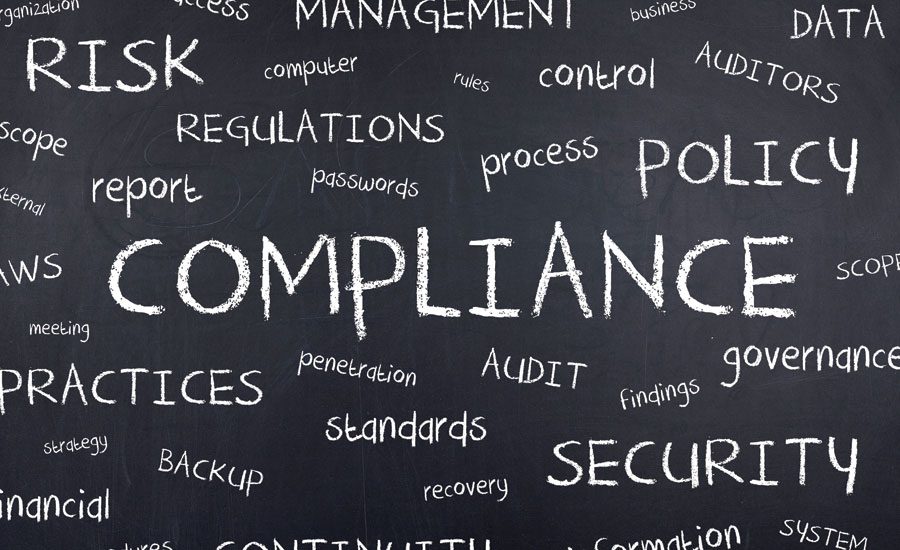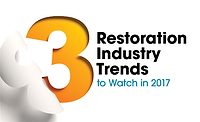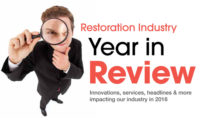*A Note from the Editor:
This article is an update to the January 2016 cover story “13 Future Trends in the Restoration Industry,” based on a presentation by Mr. Pinto at PLR Expo last November. You can find the original article right here.
As I prepare this, we are two-thirds of the way through 2016, so it is probably good time to take a look back at my predictions of future trends and see which were hits, and which were misses. Some of the trends discussed in the initial article and presentation are related to longer term cultural and industry changes that may not become visible in just eight months.
Even so, it is worth reviewing the baker’s dozen issues that I warned restoration professionals to keep their eye on. The boldface ones will get an update below.
An increase in national credentials for restoration work; particularly in regards to response for mass casualty events.
Continuation of the trend of government licensing of various aspects of restoration work.
- Bureaucracy will worsen.
- Amplification of the growing difference in how insurance organizations approach the restoration industry with some expanding and integrating preferred vendor programs and others stepping away from them.
- New challenges for the franchise model of doing business with pressure to treat franchisees as employees.
- Growing public awareness of environmental issues.
- A tighter connection between the environment and medical issues.
- A more active justice system.
- Continued bleed-over of technology.
- More emphasis on scientific proof of marketing claims,
- More individuals looking for products that are “green” rather than standard products marketed as green (a process known as “greenwashing”).
- Closer cooperation between industry associations.
- Marketing will keep shifting toward social media.
#3: Bureaucracy Will Worsen
From today’s perspective, some of the predictions turned out to be a “slam-dunk”. For example, numerous reports from both restoration industry and industry in general have confirmed government regulations in the U.S. have become more complex.
OSHA rolled out new rules dealing with exposure to silica which will have a substantial impact on most construction activities. Although restoration contractors are just waking up to the changes they need to make every time they cut cinderblock, cement board, or tile during rebuilds, the regulatory burden imposed by just that one standard is starting to become real.
Looking down the road, the prediction for increased bureaucracy seems to be solid. In July, the EPA released an explanation of its plans/rules for making sure formaldehyde does not off-gas from composite wood products. It is not enough the agency already has regulations prohibiting excess formaldehyde in such products and that the latest “crisis” was caused by foreign manufacturers importing products in violation of law; they have to have new rules. As such the EPA’s press release noted that the agency:
“…is also setting testing requirements to ensure that products comply with those standards, establishing eligibility requirements for third-party certifiers, and establishing eligibility requirements for accreditation bodies to be recognized by EPA that will accredit the third-party certifiers.”
Interestingly, Canada may be bucking the trend toward increased regulation. In 2015 they passed the “one-for-one” rule. This requires any new regulation that has a negative impact on business to be balanced by elimination of some previous administrative burden. By all accounts, this has indeed slowed down development of rules and forced regulators to prioritize projects. I am curious to see how it fares in the long term as less than a year in there is already caterwauling from different interest groups claiming that the rule is putting people at risk.
#5: New Challenges for Franchises
The warning about franchise operations coming under greater and greater scrutiny was also validated by the follow-up to some controversial 2015 decisions made by the National Labor Relations Board that tagged some franchisors as “joint employers” with franchisees.
OSHA is now utilizing the same strategy. They are attempting to classify building owners as “co-employers” with contractors working in their facilities. This means the building owner faces penalties for any violation of safety and health regulations created by the contractor — or any of their subcontractors. In essence, the implication of this approach is that building owners would have to become the experts on everything, not just their own business.
Imagine the scenario of the building owner being responsible for every action the restoration contractors took on their site in response to a large fire or flood loss. Would it also mean the restoration contractor is responsible for one of the building owner’s employees who ignores multiple warning signs and enters into a remediation environment contaminated with mold or bacteria after the contractor has left for the day?
#7: Connection Between Environmental & Medical Issues
The prediction of a closer connection between environmental and health issues was borne out in a big way with the explosion in media coverage of the Flint water crisis. The water department of that city ignored important treatment procedures which resulted in city tap water being contaminated with lead and a variety of other hazardous materials. What did not get much play was the fact that the follow-up investigations into the lead-poisoned children in that municipality showed that lead dust in the homes was responsible for most of the elevated blood lead levels, not the city water. As such, the push is on in that area to make sure that all contractors, including restoration contractors, are testing for lead in paint and following safe work procedures if it is present.
#8: More Active Justice System
These developments also expand upon the predicted trend of a more active justice system impacting the restoration industry. Another round of major fines announced under the EPA’s Lead Renovation Repair and Painting rules (RRP) targeted not just remodelers but netted some restoration contractors as well. Other occupational emphasis programs designed to increase rules compliance through the scare tactic of excessive fines have also been rolled out with OSHA’s fall protection stand-down day being the most aggressive.
#9: Continued Bleed-Over of Technology
While I believe that a variety of the other predictions were on target as well, I will end with a quick discussion about the sharing of technologies. The restoration industry is fertile ground for technology transfers.
The forensic restoration subset of the industry is awash in equipment and supplies from the healthcare industry which are specifically designed to reduce the spread of infectious contaminants. Some of these healthcare-developed technologies, like one that ionizes hydrogen peroxide, have aggressively expanded into restoration, especially for mold remediation and trauma scene projects.
Other major technology transfers include the growing recognition of mold stain removers as part of the fungal remediation process and the continued development and implementation of odor removal techniques, including hydroxyl radical equipment that employs multiple types of oxidizers in one unit.
Preparing for the Future Is No Joke
The old joke is that the only constant in today’s world is change. For individuals in the cleaning and restoration industry that is no longer a joke. In this new age we need to not only think about these types of future trends but actively position our businesses to stay in front of them.
In that respect, former U.S. President John F. Kennedy had the right attitude: Change is the law of life. And those who look only to the past or present are certain to miss the future.







Report Abusive Comment